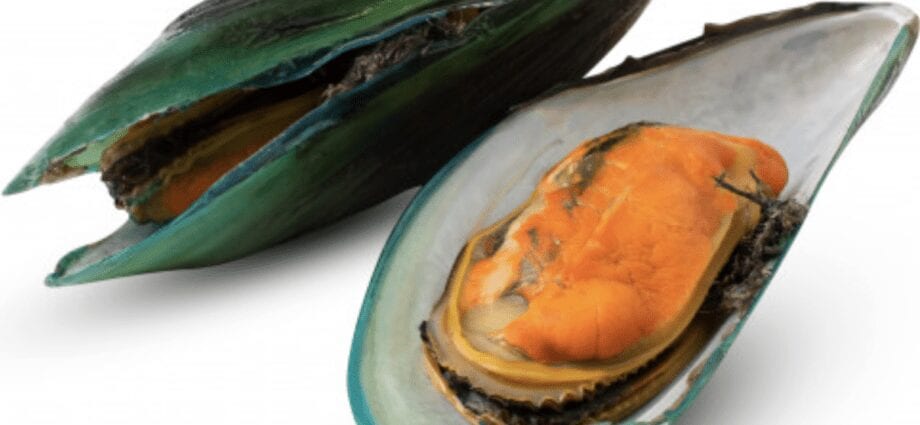Contents
Description
Mussels, like the vast majority of seafood, are very useful for the human body. They contain a lot of minerals, trace elements, vitamins we need.
The word mollusk sounds like the name of some prehistoric animal, but it is not. Molluscs are a large class of living organisms devoid of a skeleton, including snails and veners, oysters and octopuses.
They come in a variety of sizes, from microorganisms almost invisible to the naked eye to giant cephalopods reaching 15 meters in length! They can live in the tropics and arctic regions, in the depths of the sea and on land!
Mussels are gradually gaining popularity and are no longer considered such a rare delicacy as they used to be. The presence of this seafood in the diet can improve health and wellness.
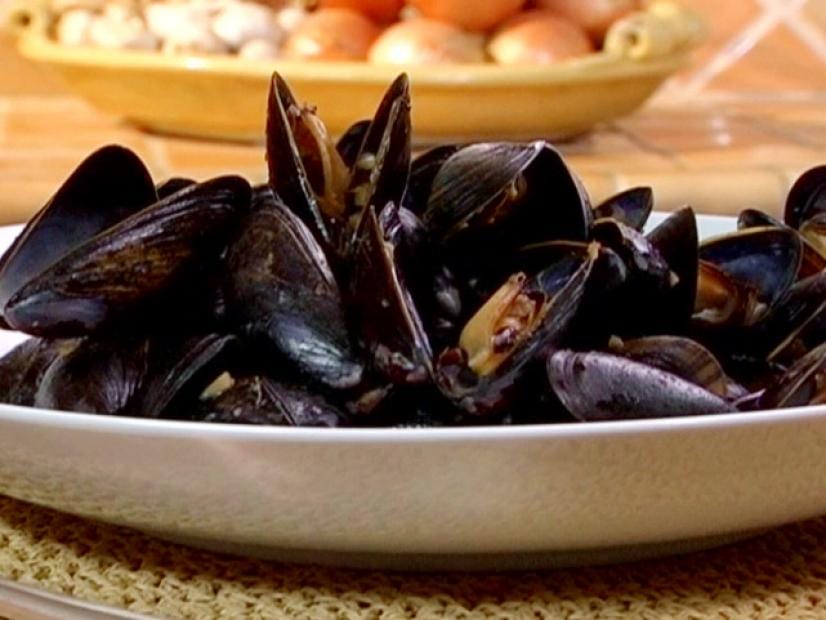
In addition, the benefits of mussels are not the only positive quality of this seafood. By themselves, they are very tasty, they can be served both as an independent dish, and as an ingredient in others. Below we will look at what exactly they are so useful, as well as some of the ways to prepare them.
The history of mussels
Mussels are small bivalve mollusks that inhabit the entire World Ocean. Mussel shells close so tightly that in Japan this seafood is considered a symbol of love union. At the wedding, the traditional soup made from these clams is always served.
Mussels were collected and eaten by ancient people. Then they began to be specially bred by the Irish in the 13th century. They dipped oak trunks into the water, planting mussels with eggs on them. After a year or two, a colony formed, the mollusks grew up, and they were collected. The colony can grow up to 10 meters in diameter.
Mussels can form small pearls: if a particle of sand or a pebble gets inside, it is gradually enveloped by mother-of-pearl to protect the delicate body of the marine life.
The ancient method of collecting mussels is still used by the Eskimos in the Arctic regions. Since the water is covered with a thick crust of ice, people wait for low tide and look for cracks in order to get shellfish through them. Sometimes the Eskimos even go down under the ice to the bottom.
Composition and calorie content
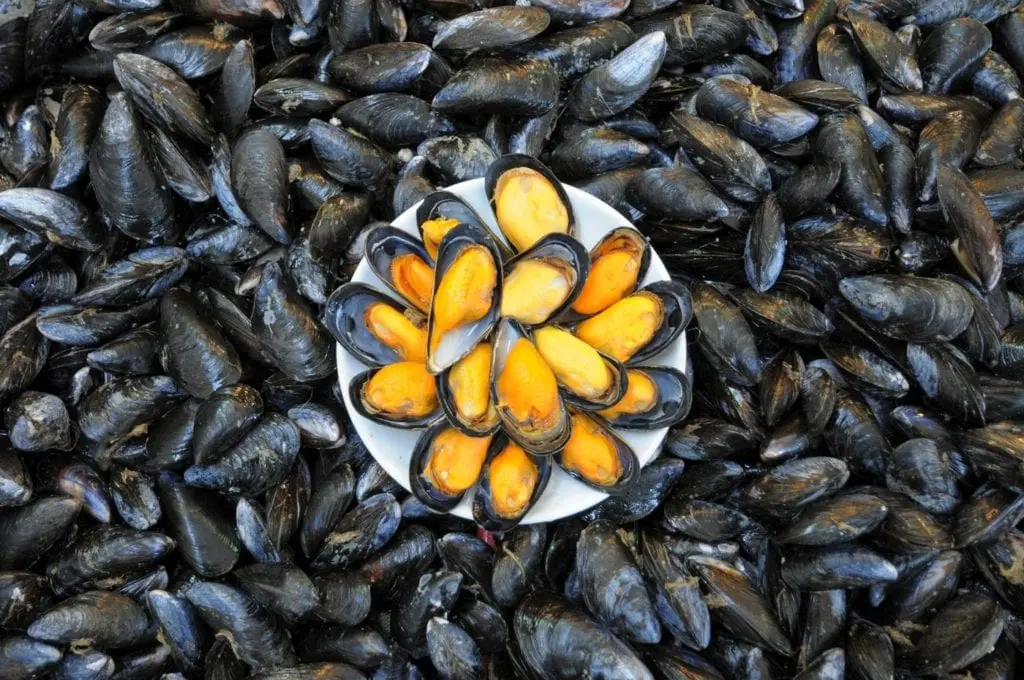
Mussels are rich in vitamins and minerals such as: choline – 13%, vitamin B12 – 400%, vitamin PP – 18.5%, potassium – 12.4%, phosphorus – 26.3%, iron – 17.8%, manganese – 170%, selenium – 81.5%, zinc – 13.3%
- Calorie content 77 kcal
- Proteins 11.5 g
- Fat 2 g
- Carbohydrates 3.3 g
- Dietary fiber 0 g
- Water 82 g
The benefits of mussels
Mussel meat is mainly composed of protein, which is easily digestible. Despite their high fat content, shellfish are not harmful to cholesterol watchers. Mussels contain exactly the polyunsaturated fatty acids that are required for good brain function.
Mussels are rich in various trace elements: sodium, zinc, iodine, manganese, copper, cobalt and others. There are many vitamins of group B, as well as E and D in them. Indispensable antioxidants help restore the health of weakened people, reduce the impact of the harmful oxidative process.
A large amount of iodine makes up for the lack of this trace element in the body. Mussels are especially beneficial for people with insufficient thyroid function.
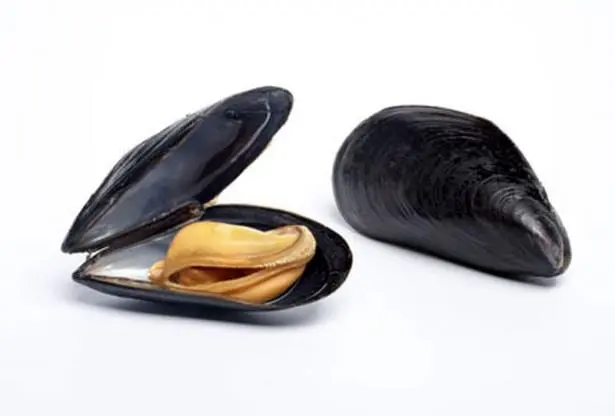
Mussels are a good source of zinc due to their lack of substances that interfere with its absorption. The amino acids in the shellfish improve the solubility of zinc, which is essential for the synthesis of many enzymes. Zinc is found in insulin, participates in energy metabolism, therefore it helps to reduce weight by speeding up metabolism.
It has been proven that regular consumption of mussels reduces inflammation, strengthens the immune system, which is extremely beneficial for diseases such as arthritis. The meat of this shellfish even reduces the risk of cancer and the degree of exposure to radiation on the body.
Mussel harm
The main danger of mussels lies in their ability to filter water and retain all harmful impurities. One shellfish can pass up to 80 liters of water through itself, and the poison saxitoxin gradually accumulates in it. A large number of mussels collected from polluted water can be harmful to the body. Raw molluscs are even more dangerous, including because of possible parasites.
When mussels are digested, uric acid is formed, which is dangerous for patients with gout.
Mussels can also cause allergies, so they must be very carefully introduced into the diet of people with allergies, asthma, dermatitis, rhinitis and other similar diseases. The danger is that the intolerance of the product may not appear immediately and the inflammation of the mucous membranes and edema will gradually increase.
The use of mussels in medicine
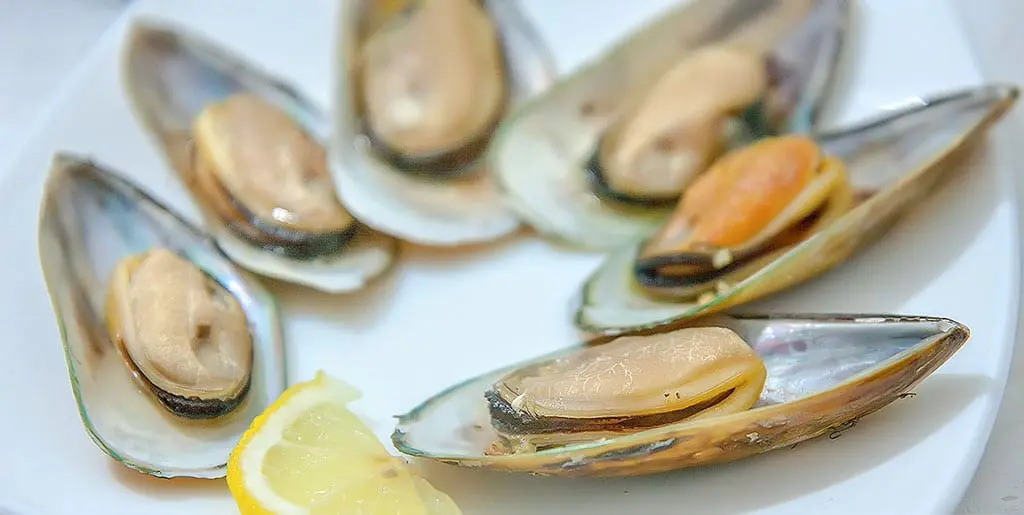
In medicine, mussels are recommended for people with a lack of iodine in food, to strengthen the body, weakened by the disease. Mussels are also suitable as a dietary food, but not canned ones – their calorie content is significantly higher.
In the diet of athletes, mussels will also not be superfluous – they contain more protein than beef or chicken, which is important for increasing muscle mass.
Also, various extracts are obtained from mussels, which are later used in cosmetology, adding to creams and masks. Hydrolyzate from mussel meat is used as a food additive. It is a concentrated protein powder in the form of powder or capsules, which increases immunity and body endurance.
The use of mussels in cooking

In their raw form, mussels are usually not consumed, although there are people who like to eat them sprinkled with lemon juice.
Most often, mussels are baked, soup is made from them, kebabs are made and marinated. Ready-made, taking out the meat from the shell, seafood can be added to various salads and main dishes. It is difficult to find fresh mussels in the shells on sale, so they are easier to purchase peeled and frozen.
The packaging indicates whether they are boiled or not yet. In the first case, the mussels only need to be thawed and rinsed, you can lightly fry. If the seafood is raw, it should be boiled or fried for 5-7 minutes, but no more – otherwise the consistency of the dish will become “rubbery”.
When cooking mussels in shells, they are usually not opened – the flaps themselves open from heat treatment.
Mussels in soy sauce

A simple snack that can be eaten as a stand-alone dish or added to salads, pasta, rice. The dish is cooked from raw shellfish for 5-7 minutes, from frozen shellfish – a little longer.
Ingredients
- Mussels – 200 gr
- Garlic – 2 cloves
- Oregano, paprika – on the tip of a knife
- Soy sauce – 15 ml
- Vegetable oil – 1 tbsp. a spoon
Preparation
Heat the oil in a skillet, fry the peeled crushed garlic cloves for half a minute, so that they give off flavor to the oil. Then remove the garlic. Next, add mussels without folds to the pan. Frozen can be thrown without first defrosting, but it takes longer to cook.
After frying for 3-4 minutes, pour in soy sauce and add oregano and paprika. Mix thoroughly and simmer for a few more minutes. Sprinkle with lemon juice before serving.










